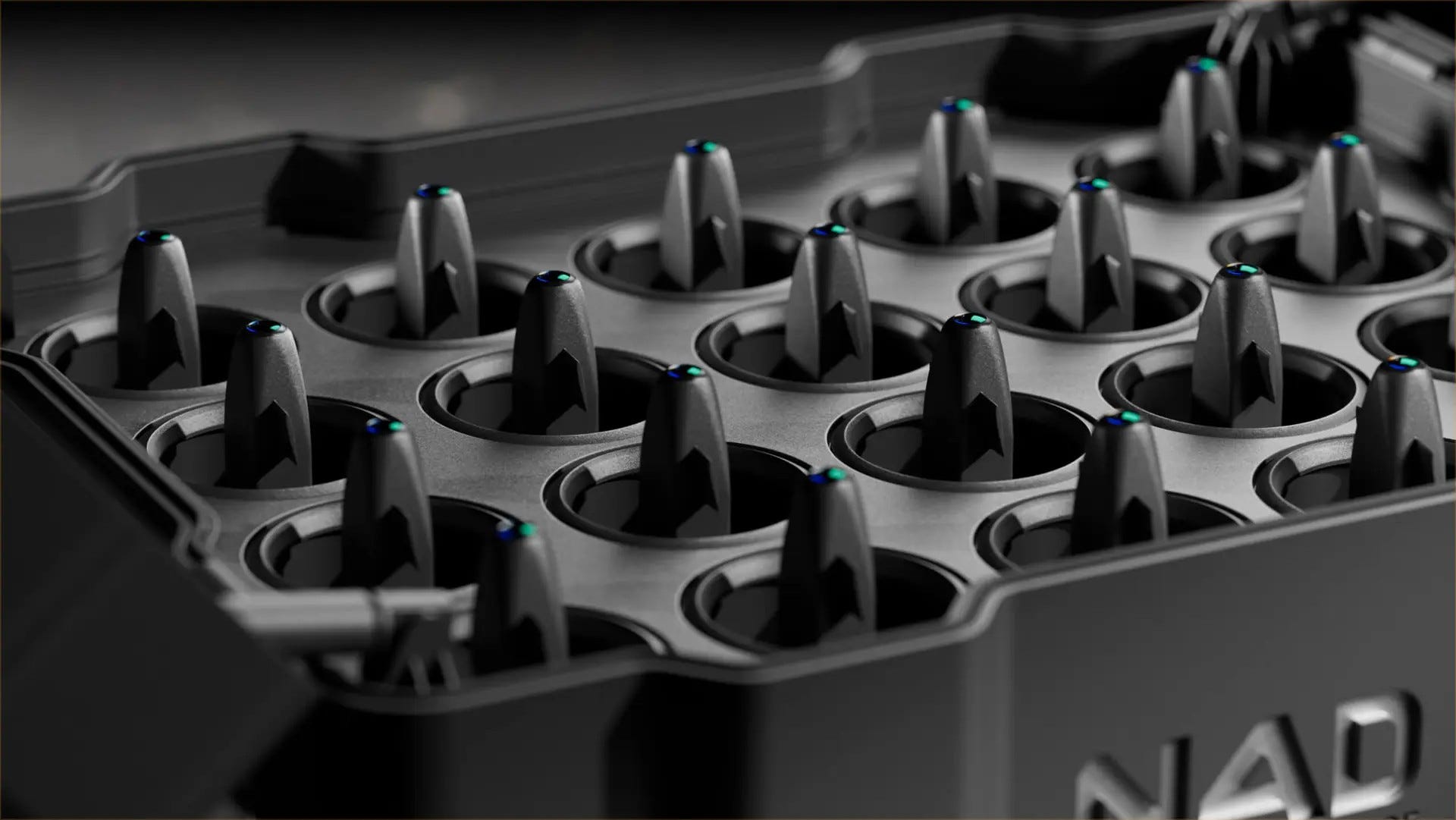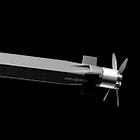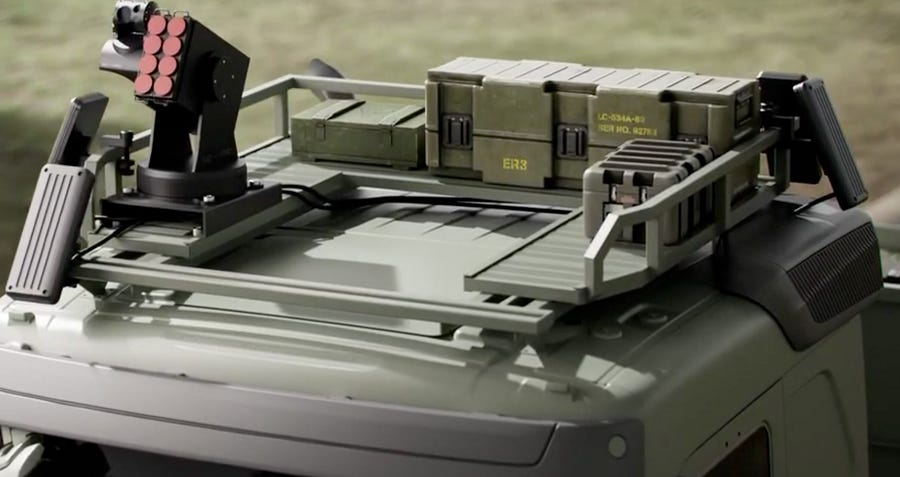Sweden’s Kreuger-100 Drone Hunter Just Got a Big Upgrade
Cheap drone defense for frontline ops
Back in April, I got the scoop on a small but mighty Swedish drone killer called the Kreuger.
The Kreuger is a tiny, battery-powered interceptor that costs a fraction of the price of a missile, is launchable by one soldier, and guided by software that gets smarter with every firmware update.
At the time, I said it was a perfect solution for the soldiers on the front lines who must contend with FPVs on a daily basis.
As it is now, Ukrainian soldiers are using a variety of counter-drone measures, from the humble shotgun for close encounters to crew-served machine guns on technicals (light pickup trucks).
Plus a variety of nets and unique drone armor.
The Kreuger (cheap enough to field in the thousands) is an amazing semi-automated hunter that clears the sky of enemy FPVs. But my big takeaway back in April was that the Krueger was designed from the ground up to be a software-first effector. This makes changing mission parameters very easy.
Now, the company behind it, Nordic Air Defense (NAD), has just announced a bigger, meaner cousin: the Kreuger XR. It has a longer range, a thermal seeker, a warhead (the original variant didn’t explode, it just killed by hitting the drone), and a longer loiter time.
Sorry, there are not a lot of images (as in, none) yet of the XR variant.
But the XR is the same philosophy: less metal, more sensors, more code.
When the enemy can saturate the sky with cheap, low-cost UAVs and loitering munitions, the classic one-for-one missile defense math breaks down.
What the Kreuger (and the upcoming XR variant) does is bend that economics back in favor of the defender. It’s built to be cheap, scalable, and disposable if necessary. Instead of having one exquisite sensor and one exquisite missile bubble, you get thousands of tiny, smart interceptors that can be mass-deployed across a sector and updated via software overnight.
It’s the difference between defending with Fabergé eggs and building a sea of rebar.
The company’s approach is explicitly software-first. The guidance, target discrimination, and interception logic live in code that can be updated remotely. This means fixes are more akin to firmware updates in the field, not whole-vehicle refits back at the factory.
That makes it adaptable: new Russian countermeasures? Patch it.
New Russian drone behavior? Patch it.
Need a different engagement profile? Download the new algorithm overnight.
That kind of agility is money in the bank.
Early test flights are already happening. NAD told Aviation Week they’re test flying the XR two to three times a week.
Importantly, NAD is working to build a European supply chain. They’re avoiding Chinese components where feasible, pulling parts from Southeast Asia, and lining up European suppliers for the more sensitive bits. That matters politically, and from a sanctions/embargo resilience perspective.
No one wants to be halfway through a product ramp-up only to discover a supplier adrift in bad diplomacy.
NAD’s stated ambition is bold: deliver a loiter-capable, thermal-seeker interceptor at a single-digit-thousands price point. If they hit that mark, you’ve just given defenders a hunter-killer that costs less than a decent laptop and can be produced in the thousands.
You don’t buy Kreugers because you want a single magic bullet. You buy them because you can afford a thousand of them. Smaller NATO countries with limited budgets can suddenly cover forward units, depots, and critical infrastructure without asking the defense minister to mortgage their future.
We’re already seeing major companies circle NAD like vultures with checkbooks.
Volvo Defense partnered with NAD to create a vehicle-based system called Vipro, a modular box that integrates the interceptors with vehicle mounts. Sensors can be radar, EO/IR, or both; the launchers are modular; the whole kit is plug-and-play into an armored truck or even a Humvee.
This is exactly the kind of scaling that takes a clever prototype and makes it strategic. One factory line turns into hundreds of launch boxes distributed across a theater. You wire them into local air-defense nets or let them operate semi-autonomously. You stack overlays on maps and pre-position launcher tubes near assets.
The defenders get options, and attackers get new headaches.
The downsides and the control problem
When your tech is cheap, it spreads.
That’s not always bad; friendly forces gain capabilities, but the same tech can land in the hands of groups with less-than-friendly intentions.
Supply chains can be hijacked, and “disposable” interceptors can turn into disposable missiles if someone reprograms a seeker.
Electronic Warfare (EW) and spoofing are also potential issues. The Kreuger’s strength is software. That’s also its potential Achilles’ heel.
Jamming, thermal decoys, and spoofed feeds could blunt intercepts. NAD knows this, which is why updates and sensor fusion are central to the design. But there is always a cat-and-mouse game between sensor tech and EW.
That game gets very noisy, very fast.
There are also legal and ethical issues to think about. Automated interceptors that loiter and acquire targets autonomously raise questions about rules of engagement, PID (positive identification), and collateral risk.
I mean… who do you hold accountable when the effector commits a war crime on its own?
If we build a swarm that can kill, we also have to build governance to make sure it kills the right things. That requires doctrine and human-in-the-loop safeguards: all boring, necessary things that take longer than a firmware sprint.
NAD sent some original Kreugers to Ukraine last year. Ukraine has a distributed, agile force that thrives on mobile, layered defense. The goal was to create a local “porcupine” that makes Russian FPV drone attacks expensive and risky.
The Kreuger XR expands that by letting defenders hunt targets beyond line of sight: forward observation posts detect a threat, cue a Kr100XR loiterer that hunts and kills whatever the OP can’t see. When integrated into an EW and radar network, the enemy learns that drones are a cost they can’t afford anymore.
NAD CEO Karl Rosander and his tech-heavy team built NAD as a platform company, not a defense contractor. The company is composed of ex-Palantir, FOI, and Saab talent; they crossed the old lines.
And now, they’re explicitly pitching Europe: “If you don’t want to buy everything from America, build your own anti-drone layer.”
If Kreuger proves cheap, effective, and producible in the long term, it’s an argument for full-stack European autonomy in the drone-defense niche.
That means jobs, factories, and sovereignty all stacked up behind a small interceptor that sneers at unit cost.
The Kreuger 100 and its XR sibling don’t spell the end of big-boy, high-end air defense. You’ll still need Patriots, Medium SAMs, and kinetic layers for big missiles. But they do change the middle game.
They make cheap things survivable and expensive attacks less economically attractive.
Think of it this way: if the 20th-century battlefield was mass and maneuver, this next chapter is nimble and software-driven. The side that learns to combine cheap hardware with relentless software updates (and does it faster than its enemy can innovate countermeasures) will win the economic battle of attrition.
The Kreuger is built for that fight.
And for the love of all things reasonable: if you’re buying interceptors, don’t forget the firmware team. Cheap hardware with bad software is just expensive junk. Cheap hardware with great software? That’s the Kreuger.
I’ll update my subscribers here as soon as I get my hands on some Kreuger XR images (or video).
And as always, Glory to Ukraine. Glory to the heroes. Crimea is Ukraine.








A rack of these on a vehical, along with guns and EW makes sense of course...
But the real game changer here - IF it works as advertised - is the hand launched option. Now before you go out on patrol, or mount up to be delivered to the front, you grab your PDDW (Personal Drone Defence Weapon) from the charging/update rack and stick it in your webbing. If you get into a drone ambush, you've got an automated defence tool that will auto seek that drone you hear buzzing around but can't see. You can focus on getting to cover, or deploying other defence measures. This I think can be a transformative weapon... IF it works.
Very nice Wes, good stuff 😎👍